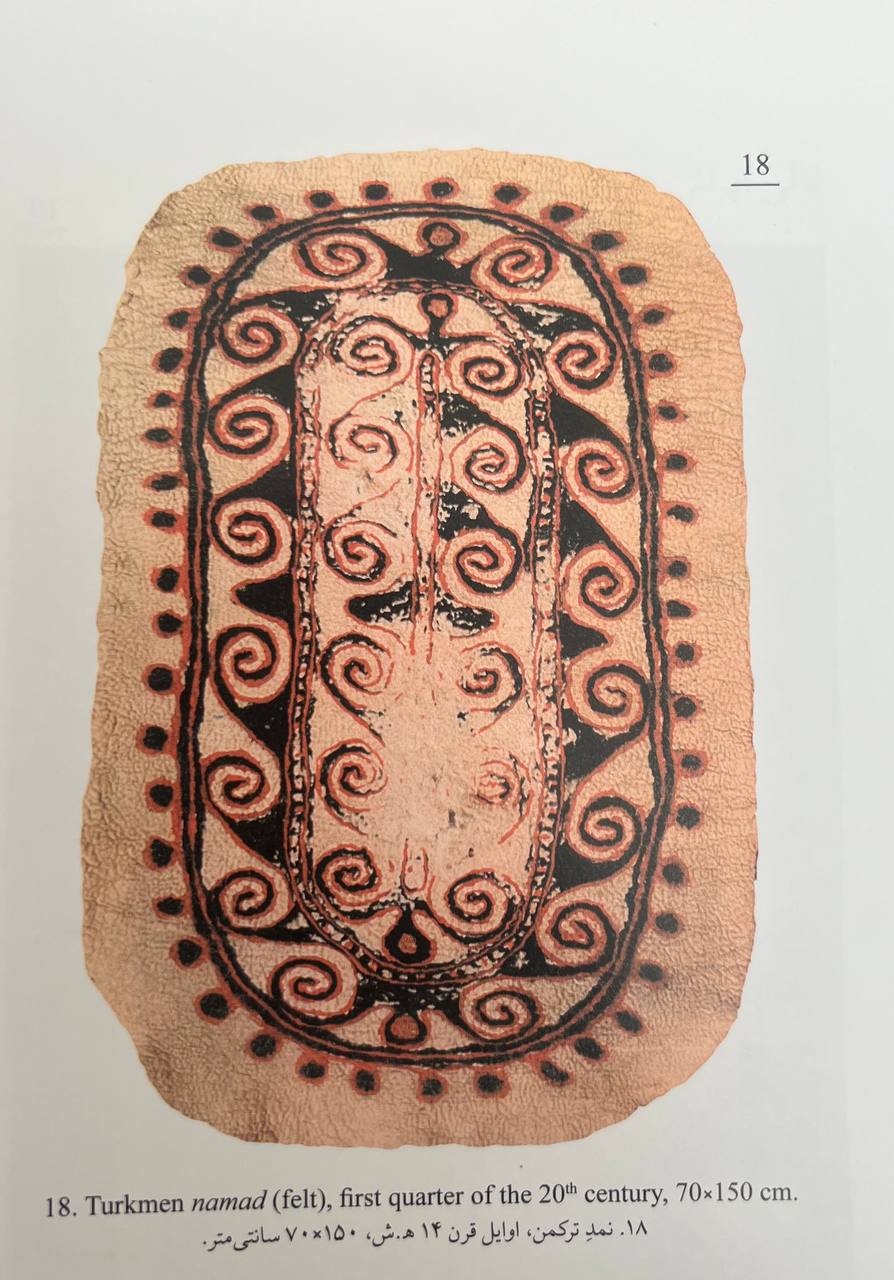Weaving in Iran
The history of the art of weaving in Iran has gone through quite a lot of ups and downs; however, it has always embodied messages of the Iranian culture, identity and history. shop carpet
At the same time, the ingenuity and creativity of the weavers seen in varieties of hand-woven items that fit their daily needs have led to the creation of a huge number of hand-woven items, presenting each of which, in particular carpets, requires separate sets of books.
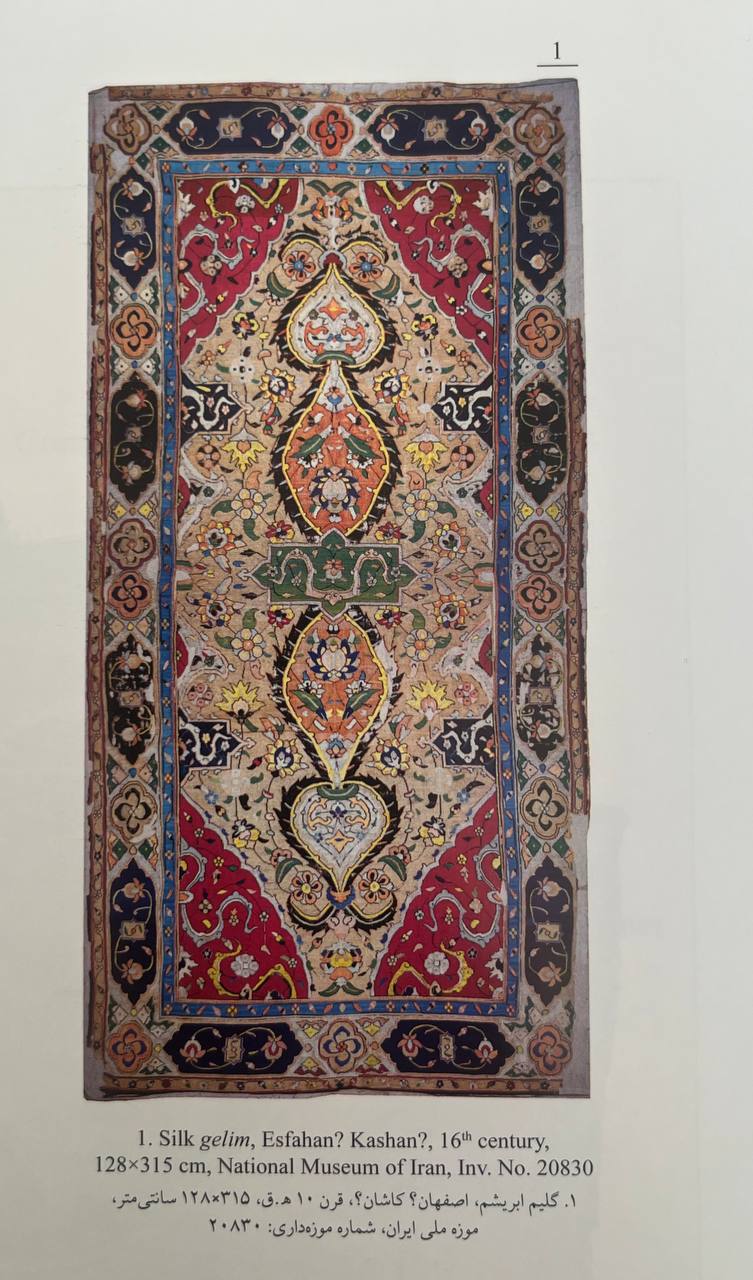
The apparent variety in the vast world of Iranian hand-woven items along with weaving techniques, the creativity, and especially different designs, patterns and coloring methods employed in producing each one does not happen to be inclusively presented in a single book.
The extent of the world of these hand-woven items becomes more apparent when we know how weavers use them as their daily equipment and necessities.
Among these hand-woven items, carpet is the most important and the most useful hand-woven floor covering. That is why for centuries, many historians, art scholars and orientalists around the world have written articles and books on Persian carpet.
Persian carpets are knotted-pile carpets that despite many visual similarities, have distinctive differences in both art and aesthetics, as well as in cultural and historical identities.Weaving in Iran A significant part of its cultural- artistic and even economic values refers to these
factors.
Apart from the cases mentioned, Persian carpet has a distinctive connection with the Iranian life system and social classes, to which its scientific classification-that would be discussed later- is directly related.
That is why sociological and anthropological studies are also included in most studies related to the Persian carpet, and this is one of the attractions of this art and carpetology in particular.
The second type of floor covering is gelim. Gelim is a hand-woven piece without any knots and piles that is also called flat woven carpet.
A wide variety of gelims or flat-weaves have been produced by nomads and villagers throughout Iran, namely chakdar (slit woven), double-sided, etc. The main difference among them is the weaving technique.
As mentioned earlier, Iranian weavers use different flat-weaves to meet certain needs, which include sofreh (table linen), salt bag, horse blanket, masnad, khorjin (saddle bag), toubreh, jowal, chanteh, black nomadic tent, etc.
Except for carpets and gelims, there are numerous
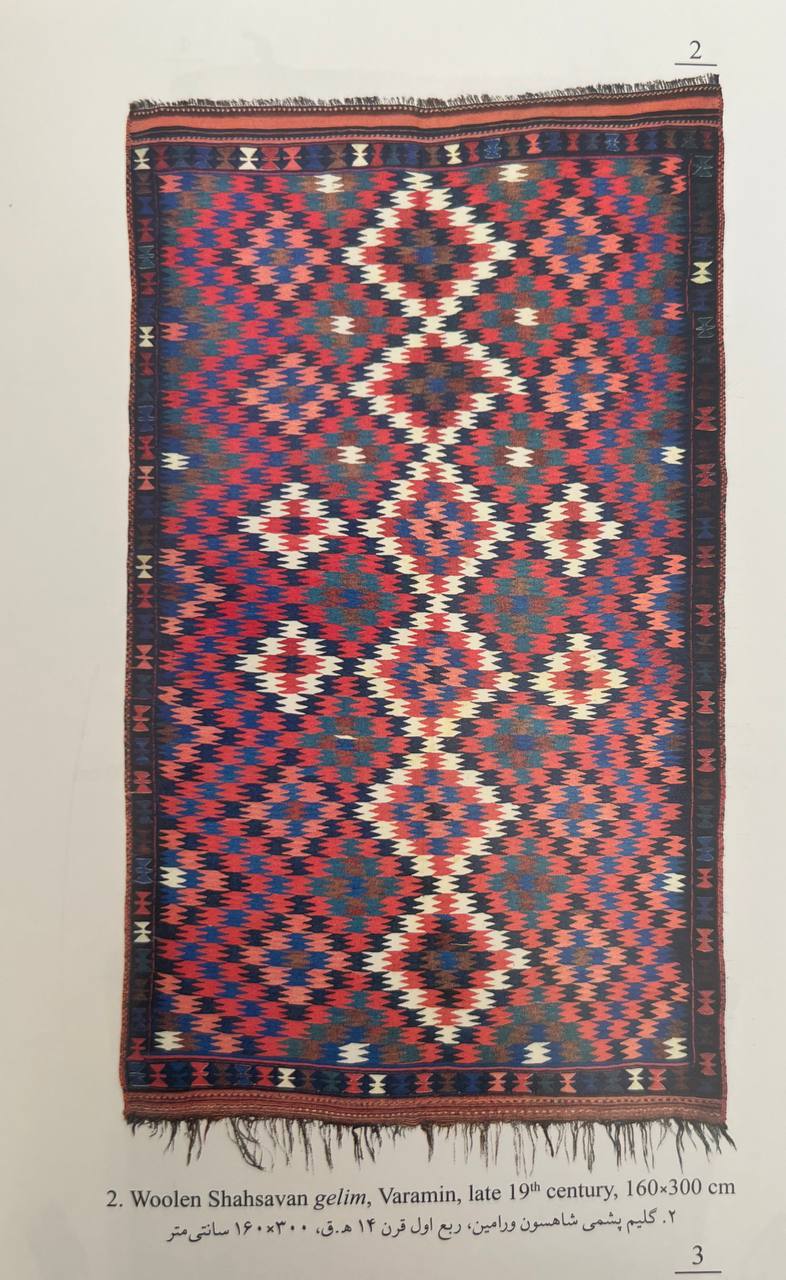
other types of floor coverings that are woven and distributed in different parts of Iran as felt, mat and zilo. Since each has their own particular usage and is directly affected by the weather conditions of the region in which they were made, studying every single one of them requires a huge amount of information to be discussed that is beyond the content of this book
All kinds of hand woven Iranian fabrics Weaving in Iran
Flat-woven container: Weaving in Iran woven pieces such as toubreh, chanteh, khorjin, jowal, masnad, namakdan, etc. known as Flat-woven container (bafteh-haye-mahfazeyi). They were used for transportations as rural and nomadic people put their stuff and belongings in them. Collecting some particular samples of this group of woven pieces leads to a unique and noteworthy collection which not only has cultural and artistic values, but also is quite expensive.
Toubreh: a small bag with a strap. Normally woven by nomads who keep their small personal belongings in it in order to carry them around. Toubreh varies in size as it can be 3 to 4 times larger than the small ones. The bigger ones have longer and stronger straps which hang around the neck of animals like horses. Then it is filled with fodder so the animal can feed from it.
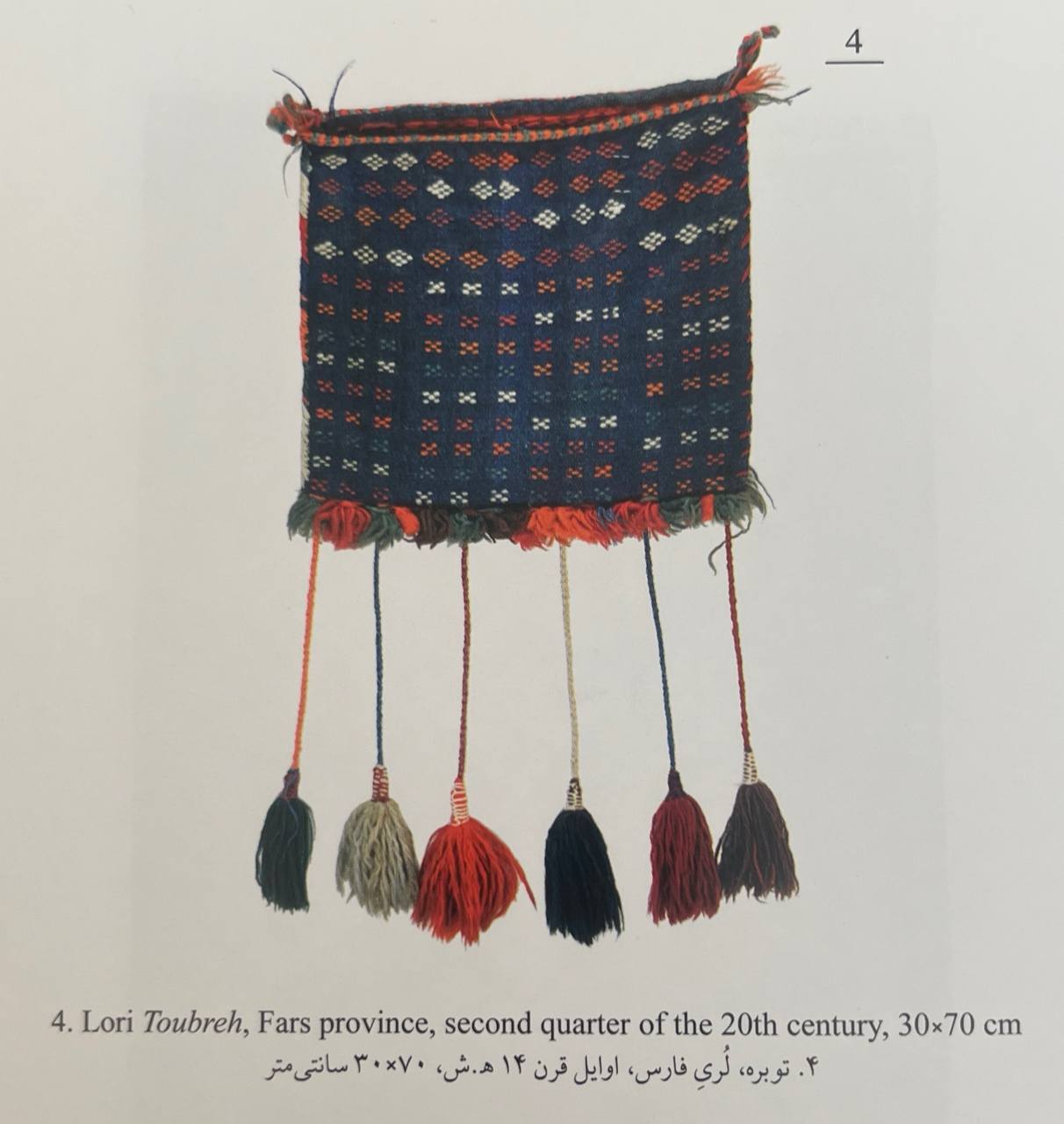
Khorjin (Saddlebag): Weaving in Iran a big woven piece that looks like a huge bag. Nomadic and rural people put them on the back of pack animals. Khorjin is used for carrying big objects that cannot be carried by Toubreh. Khorjins usually come as a connected pair with their openings set at a distance from one another (figs. 5,7). As of now,bsmaller khorjin are woven and place on thebback of motorcycles in both villages and cities.

Chanteh: Weaving in Iran another type of small nomadic bags. One of the most famous types of chanteh is the one used by dervishes and naghalha (storytellers). They wore it around their waists as they wandered around the streets or in ghahvekhaneh (old coffee houses). It is worth mentioning that the backside of this type of chanteh has a piece of leather sewn onto it. Storytellers told epic religious and literary tales and as a reward the audience gave them money which they put in their chanteh. This makes dervishes’ chanteh one of the most interesting types of nomadic and rural chantehs. Specially the ones with religious patterns (fig. 73 in page 42 is a sample of chanteh with religious patterns)
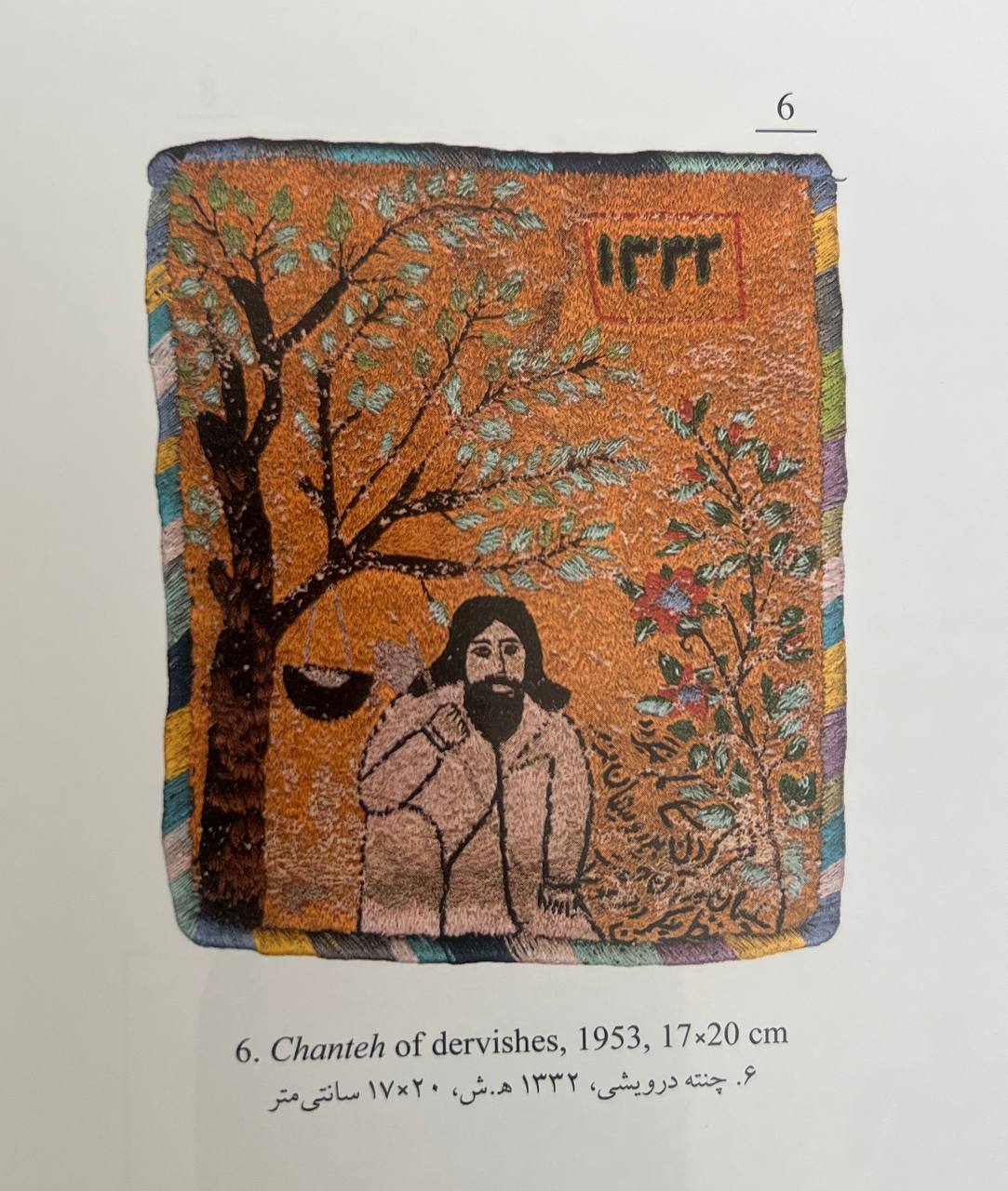
Horse blanket (jol-e-asb): Weaving in Iran Horse blanket is used as an absorbent of sweat and a cover against the cold. When a horse does a lot of activity or runs a long distance, its body gets covered in sweat. In this situation, someone puts a horse blanket on the animal to absorb the humidity of the sweat. Due to that reason, horse blankets are usually woven with cotton to increase its absorbency (fig. 10). Horse blankets can be woven with wool as well. Sometimes, some special patterns are woven into the horse blanket in order to make it more elegant. Most of the horse blankets are consisted of two parts. The main part of it is put on the back of the horse. The second part is a thin rectangle shaped piece called dastak (small hand) that goes around the horse’s neck from both sides and its opposite ends meet in front of the animal’s neck and connect to each other. Some horse blankets have only one long dastak (fig. 9) and it goes all the way around the animal’s neck from one side and returns from the other. In the end it gets connected to the main part on horse’s backside (fig. 8). Some extravagant, elaborately woven examples are made only for special ceremonies and certain rituals.
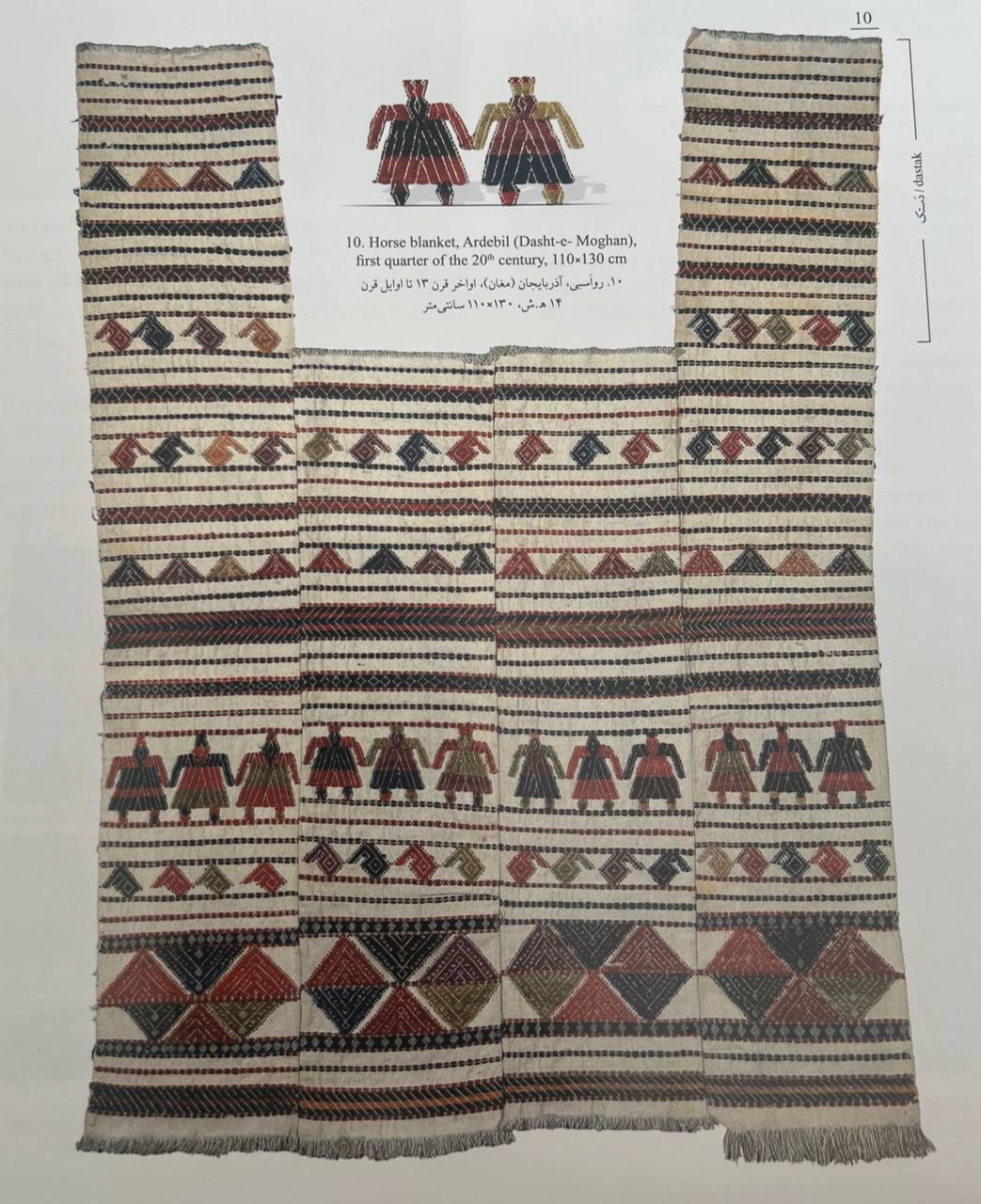
Namakdan: Weaving in Iran a woven piece that nomads use for carrying salt. Salt is commonly used while cooking in Iran and nomads have to use salt not just in their own diet, but also for their livestock as well. Sodium is necessary for animals in order to prevent many digestive diseases. The type of fodder used for feeding livestock doesn’t have the adequate amount of sodium so nomads add salt to the fodder in order to make it more pleasant for livestock. Salt is also used as a preservative for meat and yogurt. Needles to say that meat and yoghurt are the main ingredients in nomadic meals. All of these reasons make namakdan one of the most useful and important nomadic woven pieces. The upper section of namakdan is thinner than the rest, in order to make it easier to take salt from it.
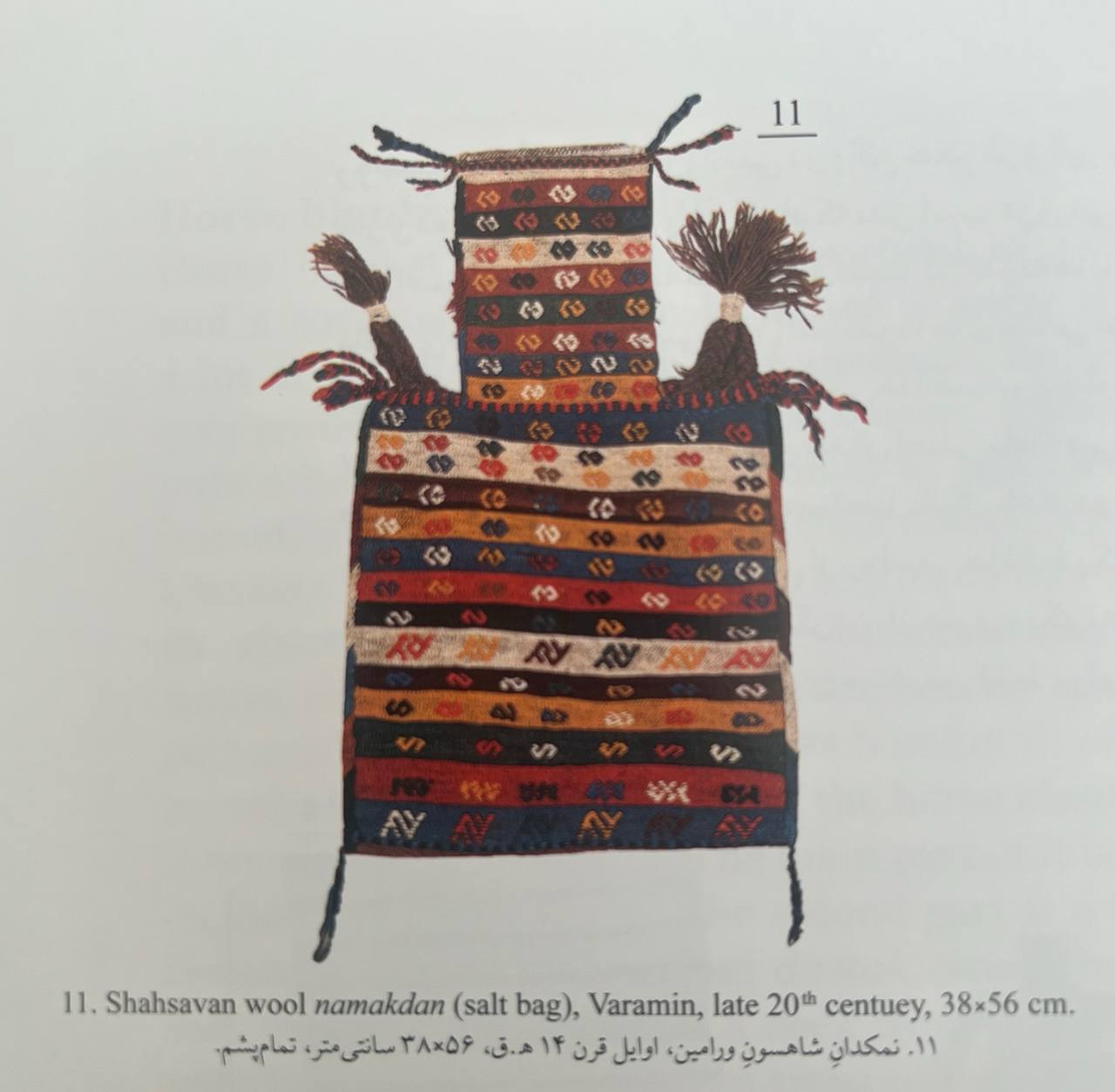
Jowal: Weaving in Iran a beautiful creative nomadic that is also used for carrying things. Jowalis larger than khorjin in size. One of the main differences between khorjin and Jowalis their shape, as khorjins are mostly square- shaped while Jowal comes mostly in a vertical rectangular shape. Jowals have a handle on each side and are often woven in pairs. They are among the most important Flat-woven container. Nomads put their stuff in Jowal while migrating and place it on animals’ back.
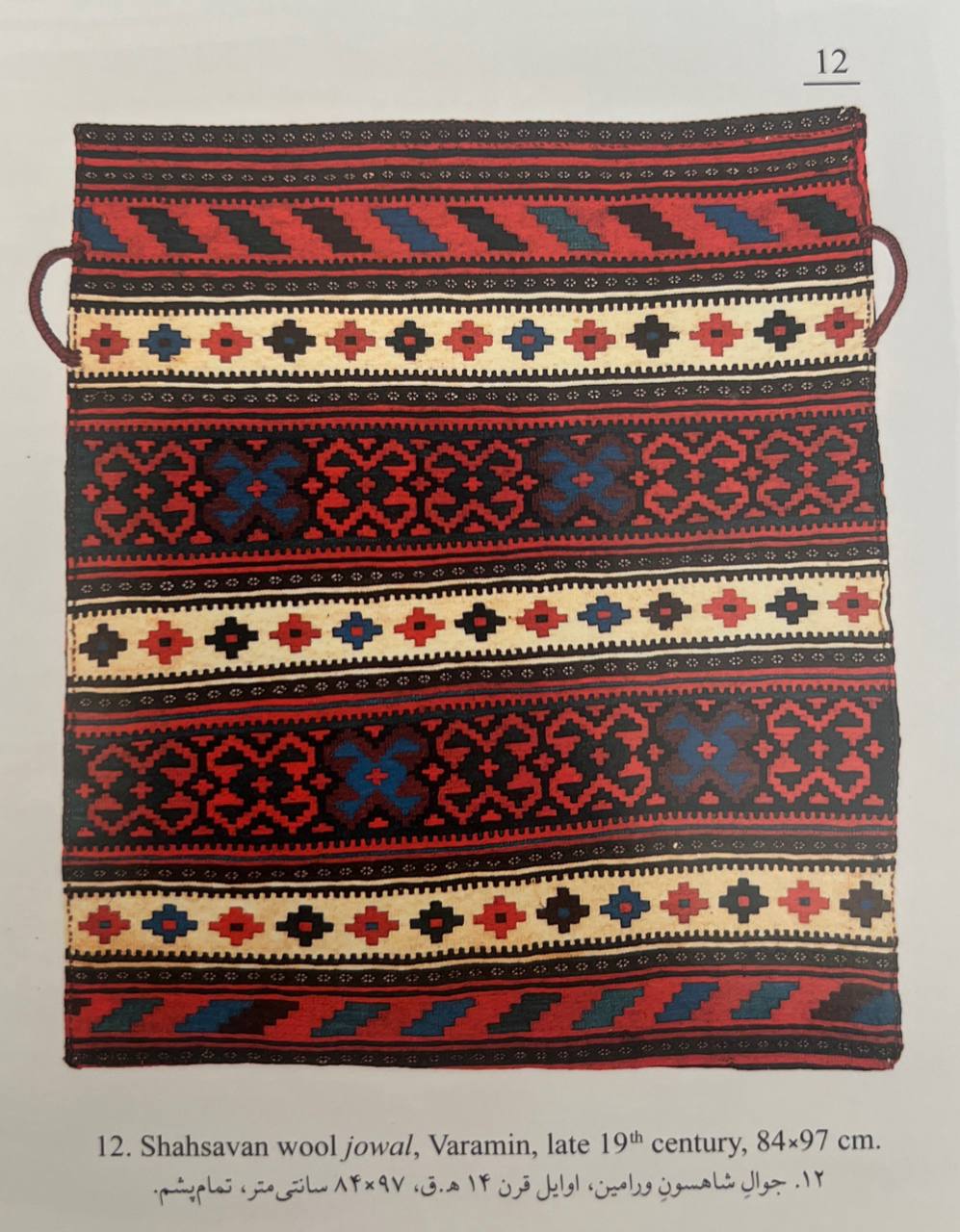
Rou-korsi: Weaving in Iran Not so long ago, before heating devices like heaters and ovens were popular, in most of Iranian houses specially among nomads and villagers, people used something called korsi to keep themselves warm. Korsi is a small rectangle-shaped table with a heater or brazier underneath it. The table is covered with a thick blanket overhanging on all sides to keep the family or other gathering warm. The top cover of korsi is usually covered with a beautiful ornamental woolen flat-weave, namely rou-korsi.
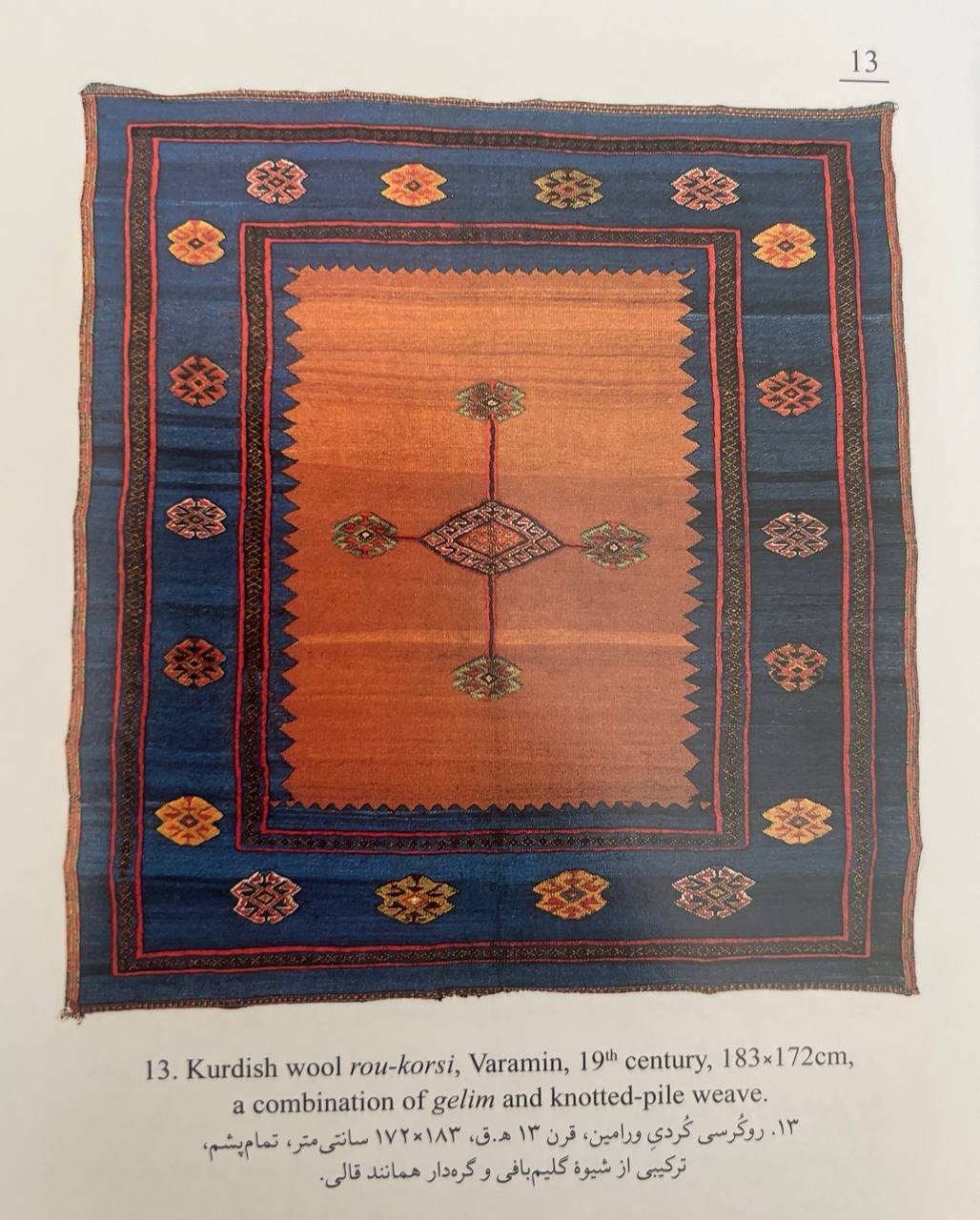
Sofreh (Tablecloth): Weaving in Iran A very beautiful flat- weave that Iranian nomads and villagers weave in three different types. Women of nomadic and rural areas of Iran are in charge of baking bread. While baking they spread a sofreh on either side of the clay oven; one for the baked bread or sofreh-ye-naan, and the other for the balls of dough or sofreh-ye-ardi. The third type of sofreh, which is larger in size and usually longer, is mostly spread on the floor as a tablecloth and dishes and food are laid out on it; people sit around it to eat their meal.
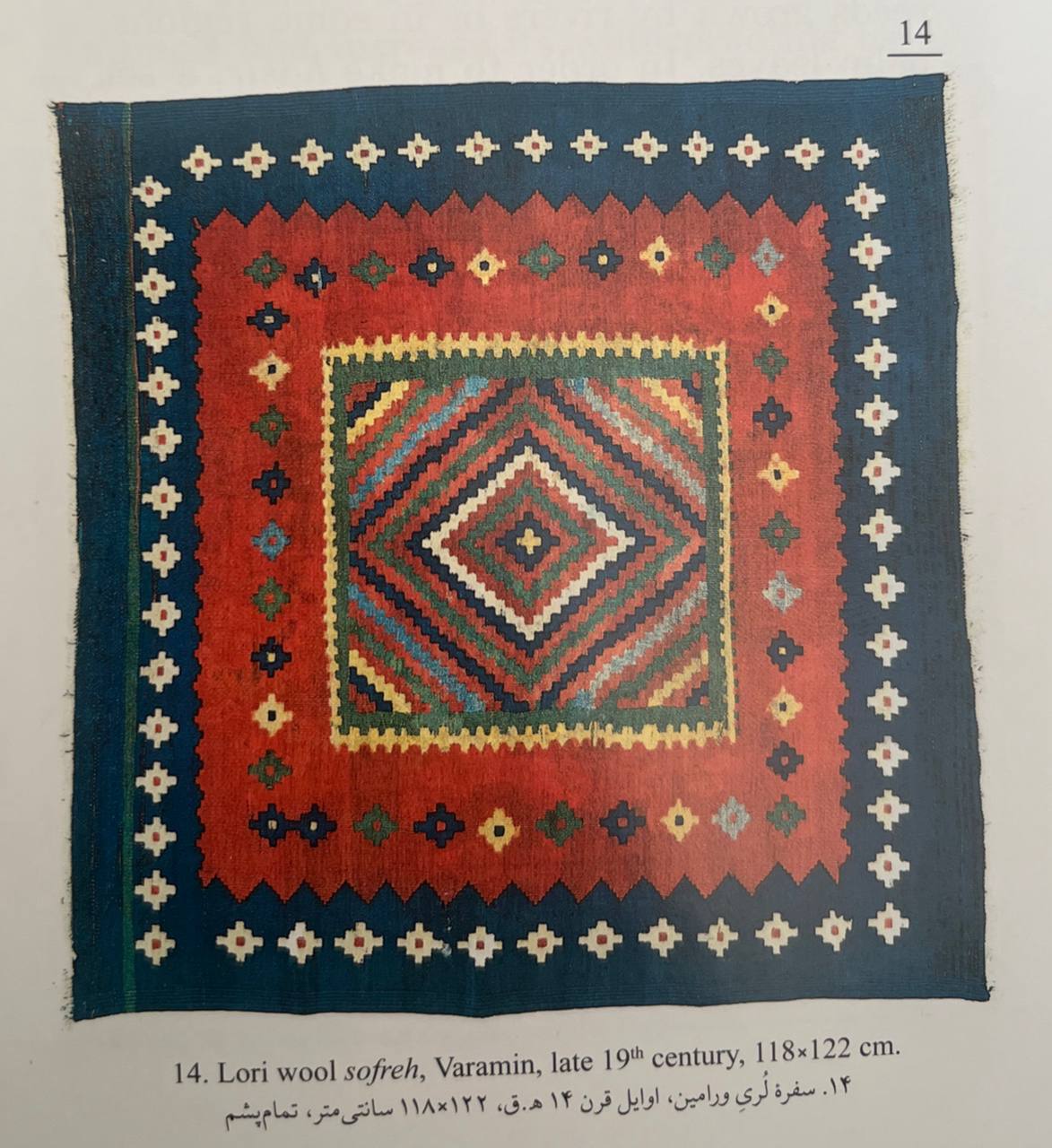
Hasir (wickerwork): Weaving in Iran hasir is the oldest and most probably the first hand-woven piece made by man that have been used as a floor covering and even as material in making huts. Hasir is traditionally made of materials of pliable plant origin such as reeds grown by rivers or in some regions, palm leaves. In order to make hasir, a set of reeds are put together and are stitched with yarn. In addition to flooring covering it can also be used as a sun shade in tropical regions. The southern regions of Iran are considered as one of the oldest centers of hasir-weaving in Iran.
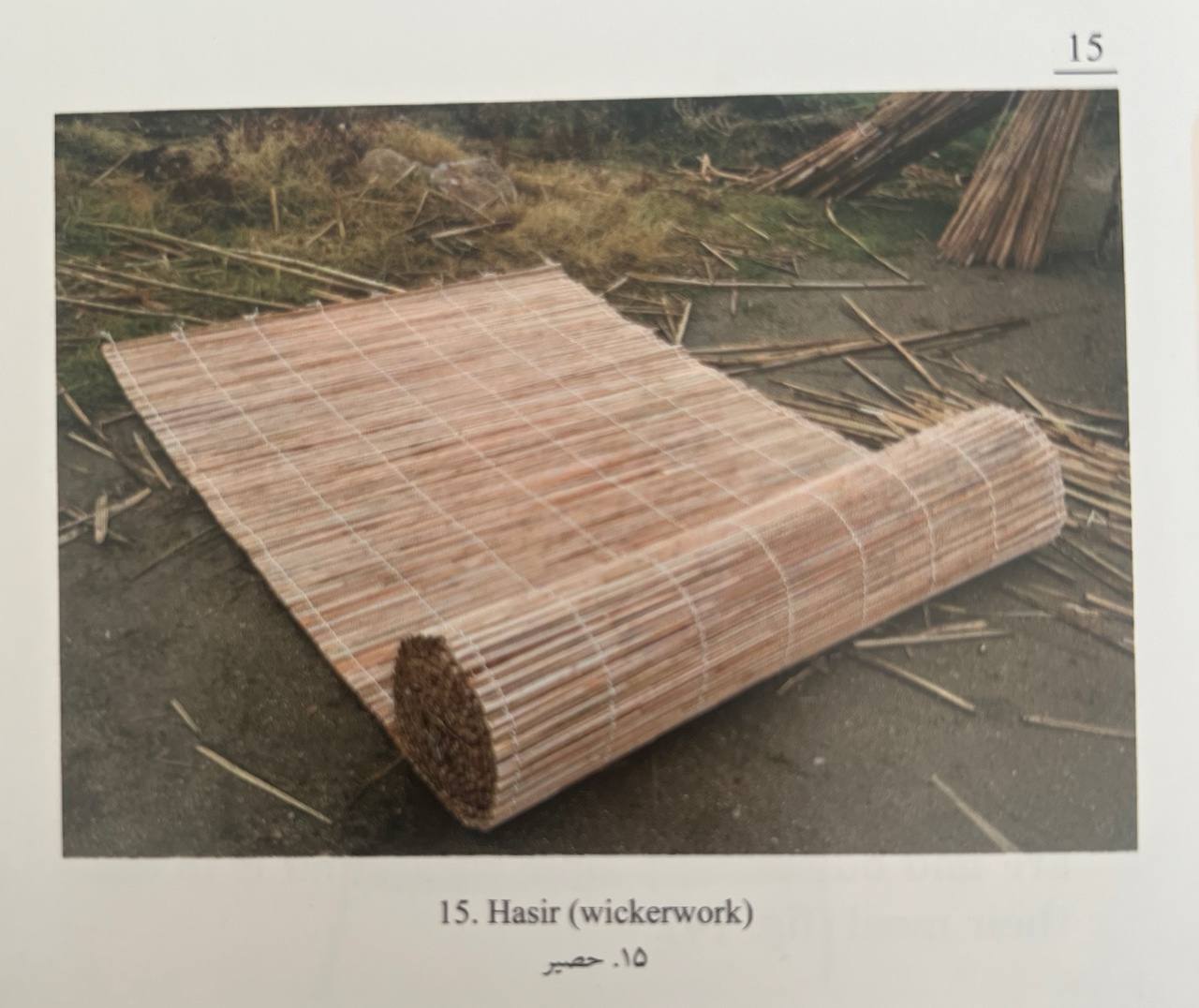
Black tent: Weaving in Iran a tent made of several pieces of Gelim without any pattern. These pieces are usually made of black goat’s hair. Goat’s hair
has 2 important features. First, it is resistant and lasts for a long time since no bug such as moth can chew it. Second, goat’s hair is resistant to humidity and rain so rain drops never penetrate the layers made of goat’s hair, thus making a solid tent for nomads. Black tents are set up by a number of wooden poles and ropes.
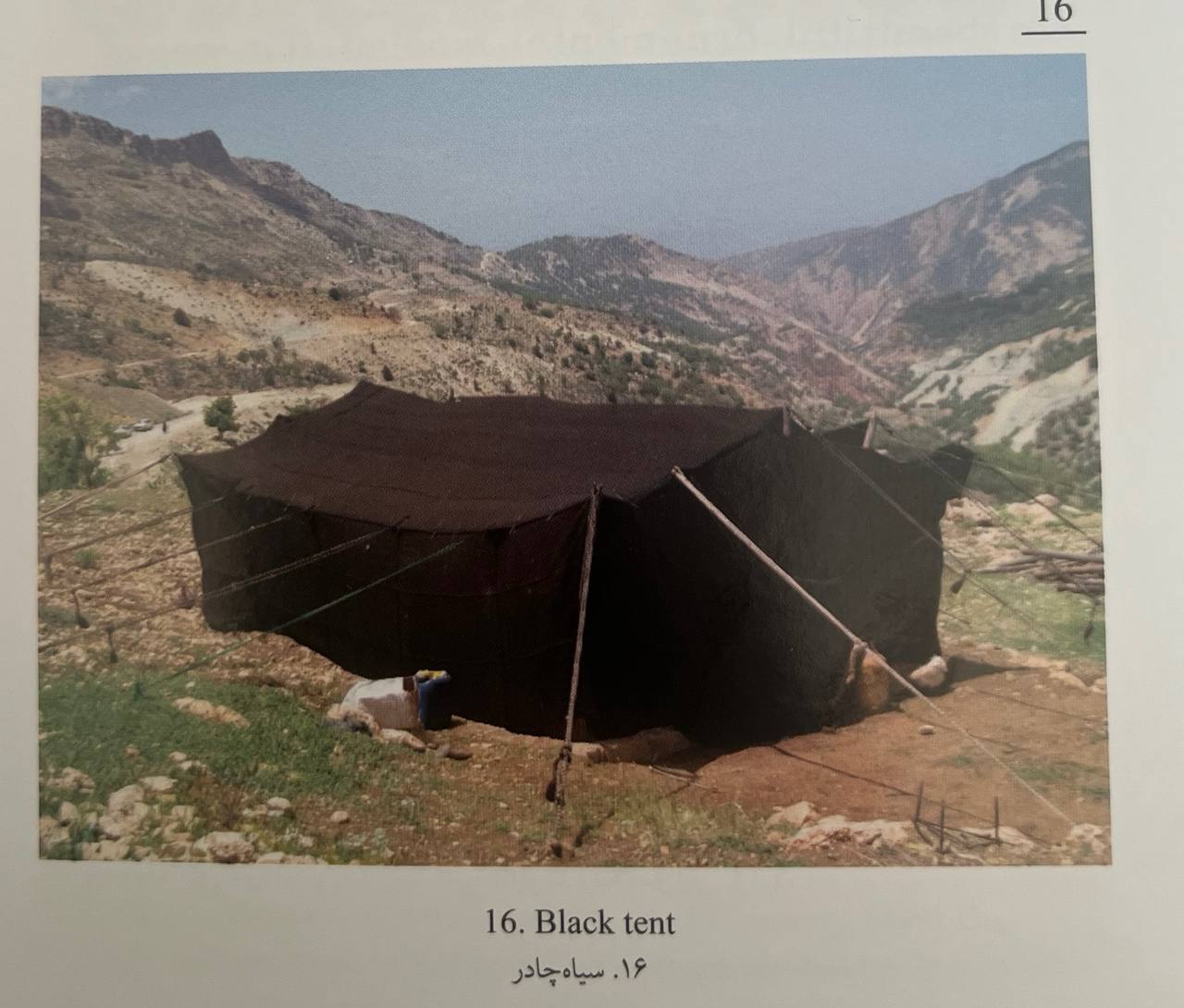
Masnad: Weaving in Iran Masnad is one of the biggest nomadic flat-weaves used as a box for transportation, in which nomads put various items such as their bedding, household items and utensils. Once they arrive at their desired destination and settle in, they put their clothes and bedding on masnad and place it on a corner or against the wall and use it as a backrest. It is used as a decorative object in black tents and even in houses of rural areas and villages. It is common in these areas for young women to weave a few masnad for themselves before they get married in order to put their dowry in them.
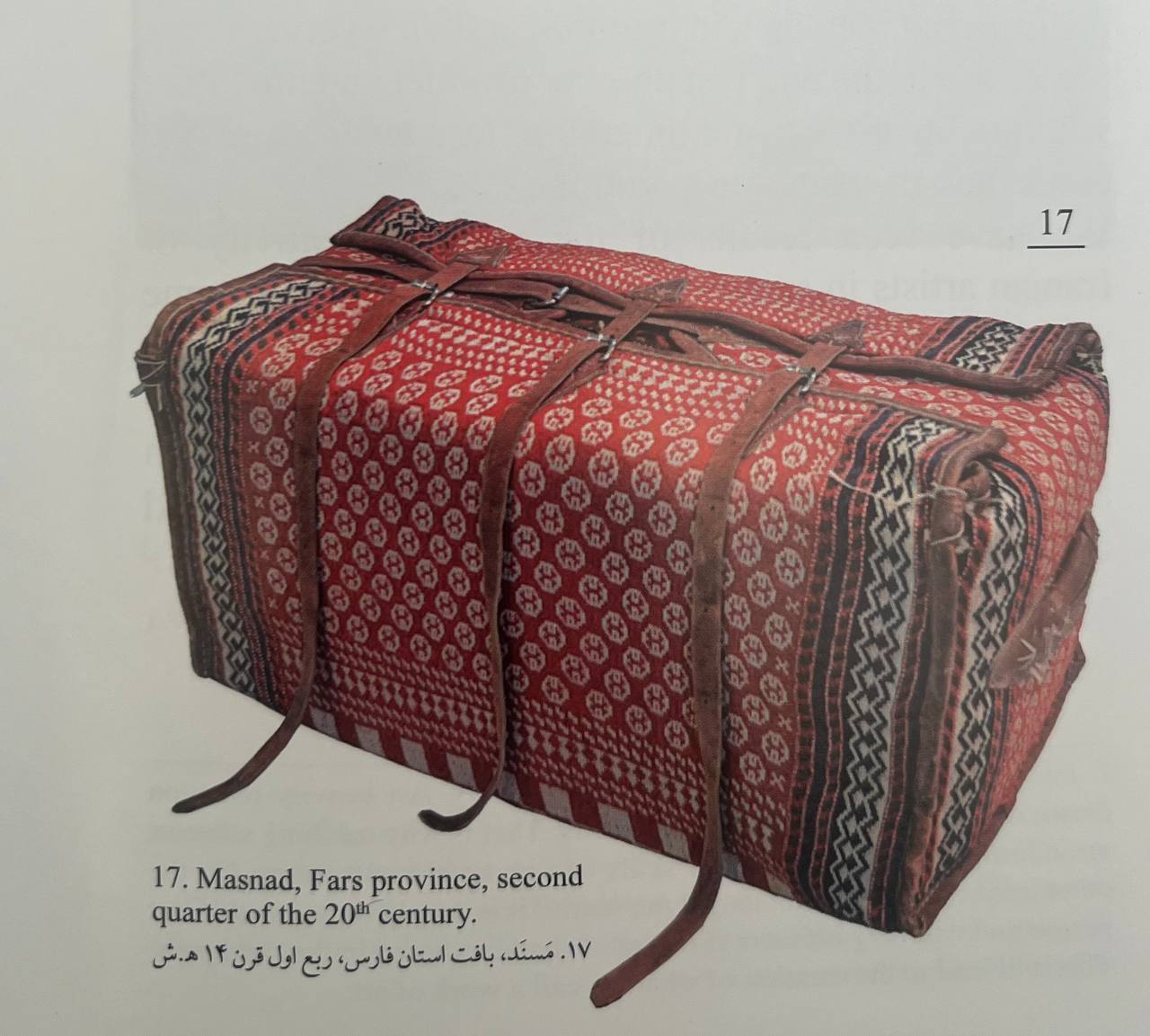
Namad (felt): Weaving in Iran Unlike carpets and gelims that are woven with spun fibers of wool, namad is produced by matting, condensing and pressing wool fibers together. In other words, the pounding of the woolen fibers with the felters’ feet or hands thickens namad and increase its waterproofing as a floor covering. Namad is mostly used in regions with high humidity because it is impermeable to moisture. Namad is also used for making rou-asbi (horse blanket), rou-korsi, etc. Persian carpet
